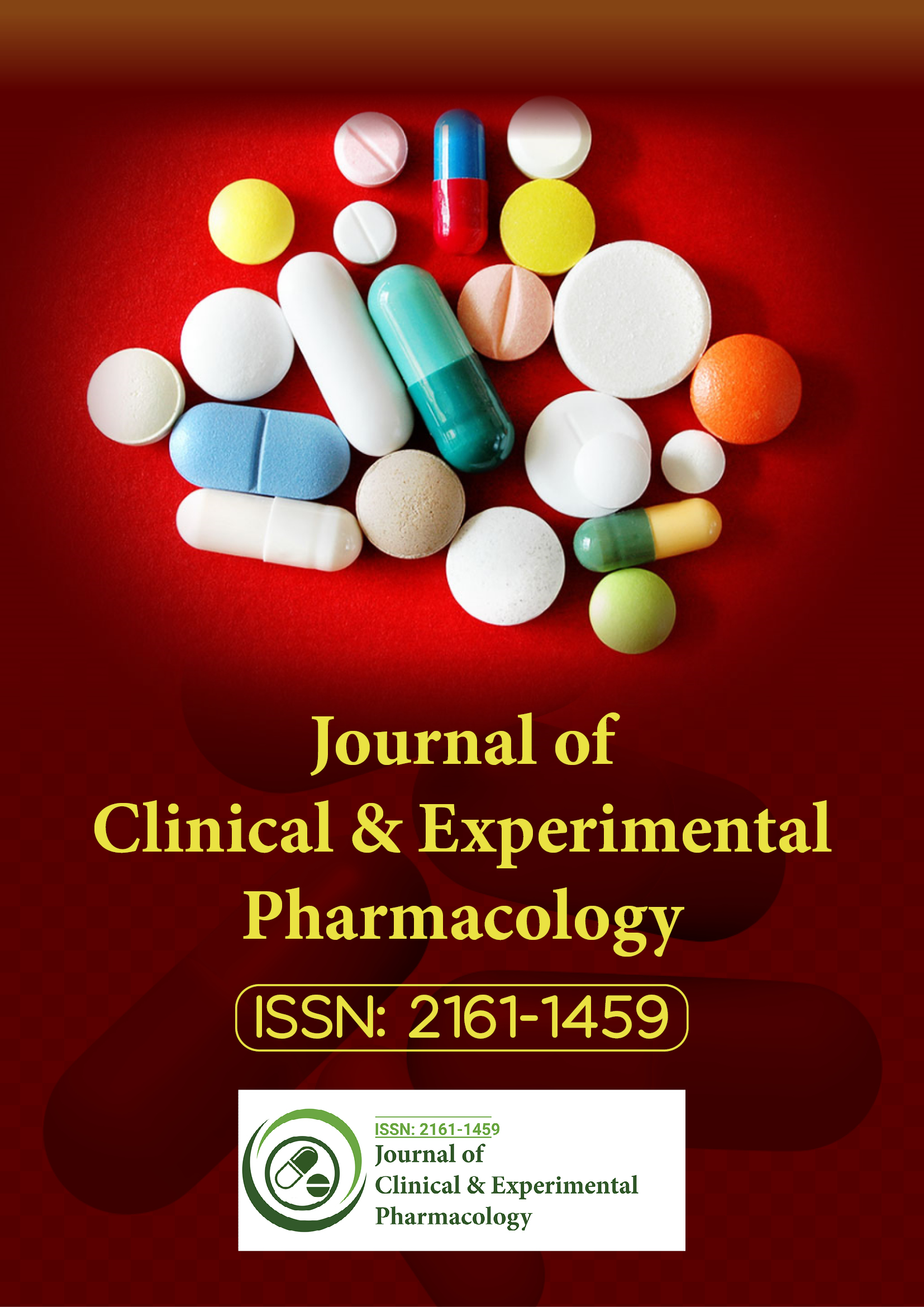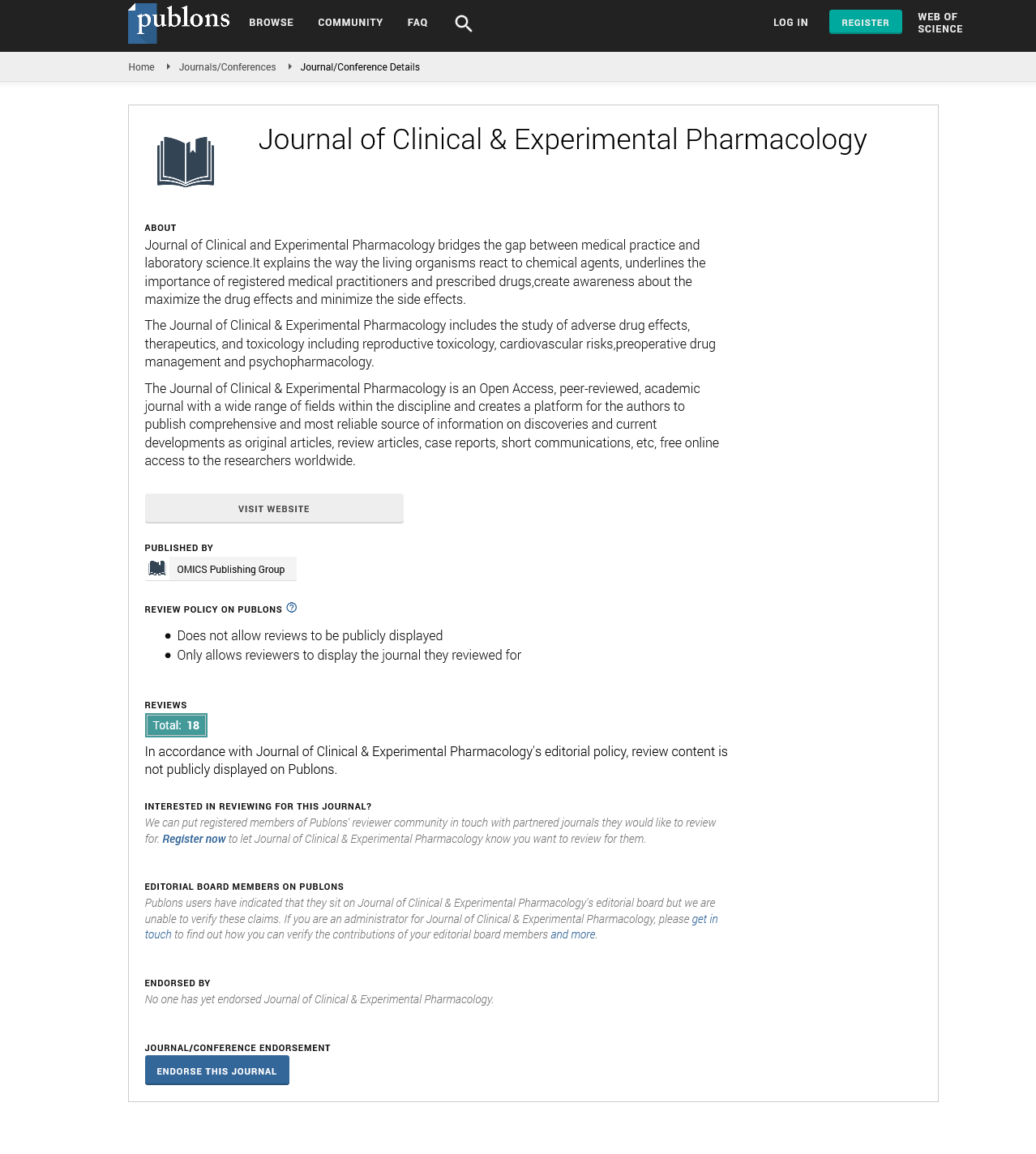Indexed In
- Open J Gate
- Genamics JournalSeek
- China National Knowledge Infrastructure (CNKI)
- Ulrich's Periodicals Directory
- RefSeek
- Hamdard University
- EBSCO A-Z
- OCLC- WorldCat
- Publons
- Google Scholar
Useful Links
Share This Page
Journal Flyer

Open Access Journals
- Agri and Aquaculture
- Biochemistry
- Bioinformatics & Systems Biology
- Business & Management
- Chemistry
- Clinical Sciences
- Engineering
- Food & Nutrition
- General Science
- Genetics & Molecular Biology
- Immunology & Microbiology
- Medical Sciences
- Neuroscience & Psychology
- Nursing & Health Care
- Pharmaceutical Sciences
Anti-thrombocytopenic and anti-leukopenic properties of Syzygium cumini (L.) Skeels (Myrtaceae) leaves in a murine model
Co-organized Event International Conference on Toxicology and Clinical Pharmacology & 2nd International Conference on Generic Drugs and Biosimilars
December 14-16, 2017 Rome, Italy
Teresa May B Bandiola and Mary Jho Anne T Corpuz
University of Santo Tomas, Philippines
Research Center for Natural and Applied Sciences ‚?? UST, Philippines
Posters & Accepted Abstracts: Clin Exp Pharmacol
Abstract:
Dengue, the most important viral infection transmitted among humans by arthropod-borne, has remained to be a national epidemic in the Philippines and has been one of the leading causes of mortality in children. There is no quick dengue infection confirmation test, however, a complete blood count (CBC) might show characteristics such as thrombocytopenia and leukopenia, both of which are vital indicators in monitoring the recovery of dengue patients. Syzygium cumini (L.) Skeels of the Myrtaceae family, locally known as duhat, is widely used for various diseases and is particularly abundant with the flavonoid, quercetin. The air-dried leaves of Syzygium cumini underwent sequential extraction using hexane, ethyl acetate, and methanol via percolation method. The three extracts were further subjected to qualitative phytochemical screening: Alkaline Reagent Test, Shinoda‚??s Test, and Bate-Smith and Metcalf Test and quantitative phytochemical screening: Total Flavonoid Content (TFC), where the methanolic extract was found to contain the highest amount of flavonoid (87.5 mg QE/gram), followed by the ethyl acetate extract (56.1 mg QE/gram), and the hexane extract (32.5 mg QE/ gram), respectively. The methanolic leaf extract, given its numerous toxicity studies to be safe from 5 to 2,000 mg/kg and is classified as category 5 (safe dose) under Globally Harmonized Classification System (GHS) as per OECD 423 guidelines, was then subjected to in vivo bioassay utilizing 24 male Sprague-Dawley rats. The rats were divided into four groups (n=6) namely: Distilled Water 10mL/kg p.o., Hydroxyurea 15 mg/kg p.o., Methanolic Extract 400 mg/kg p.o., and Methanolic Extract 800 mg/kg p.o., where hydroxyurea was used to induce thrombocytopenia and leukopenia in all groups. After induction, oral treatment of methanolic extract was given daily to the treatment groups for six days along with hydroxyurea but hydroxyurea was only given for the first three days. The thrombocyte and leukocyte counts were measured before induction to get the baseline, after induction, and at the 1st, 3rd and 6th day of treatment. Applying one-way ANOVA and Duncan Test as post-hoc, results revealed that the methanolic leaf extract of Syzygium cumini exerted an anti-thrombocytopenic property at both doses of 400 and 800 mg/kg and an anti-leukopenic property at the dose of 800 mg/kg. This study significantly claimed for the first time that the leaves of Syzygium cumini can be orally active and effective in increasing platelets and WBCs in Hydroxyurea-induced thrombocytopenia and leukopenia. Hence, it is a potential candidate for further research leading to the development of an herbal therapeutic agent for Dengue.

